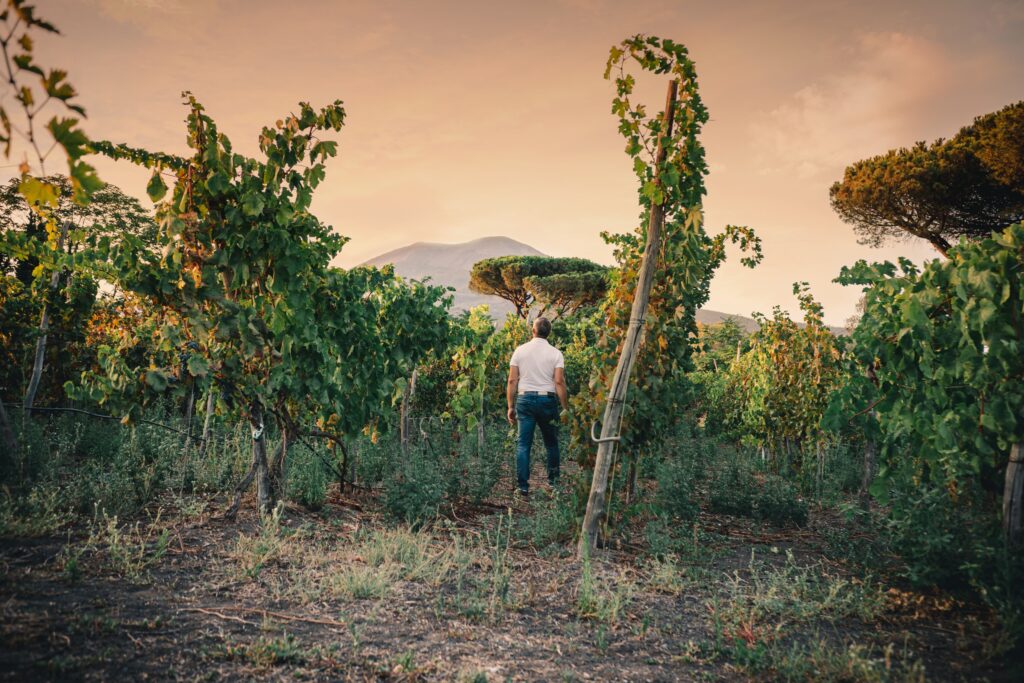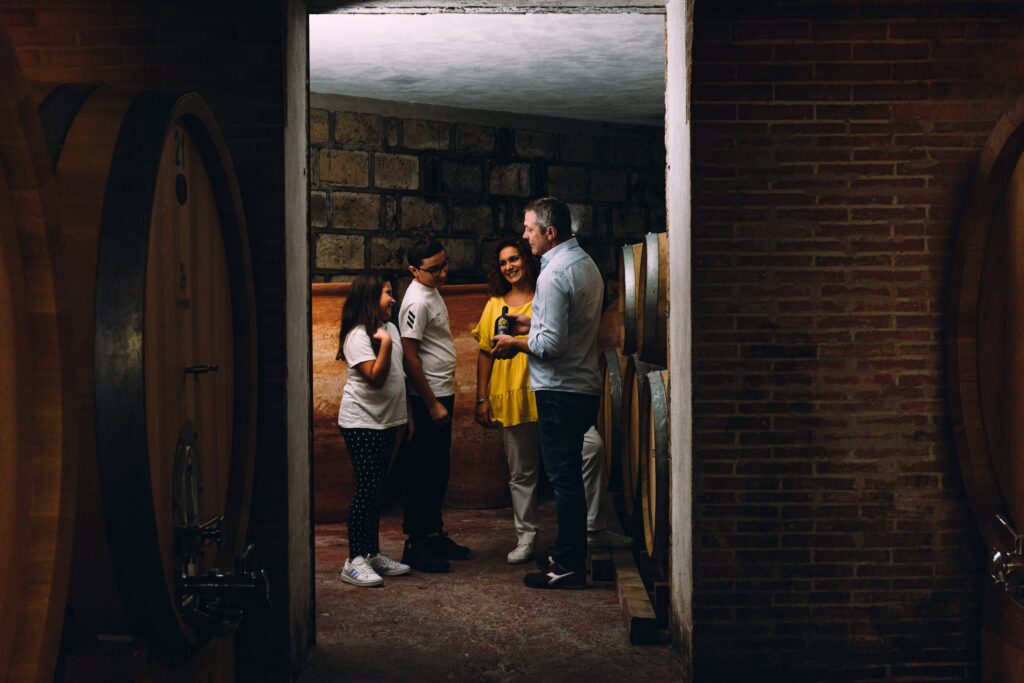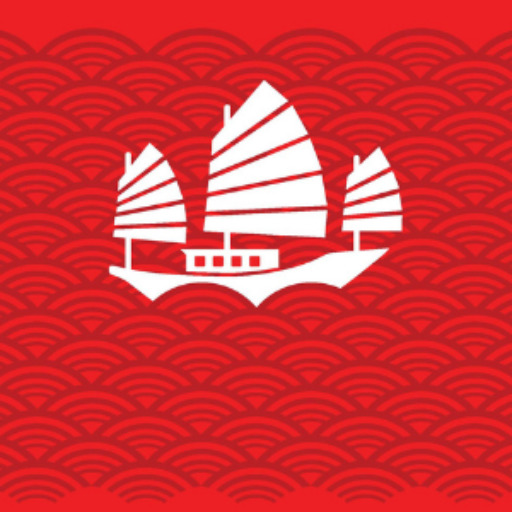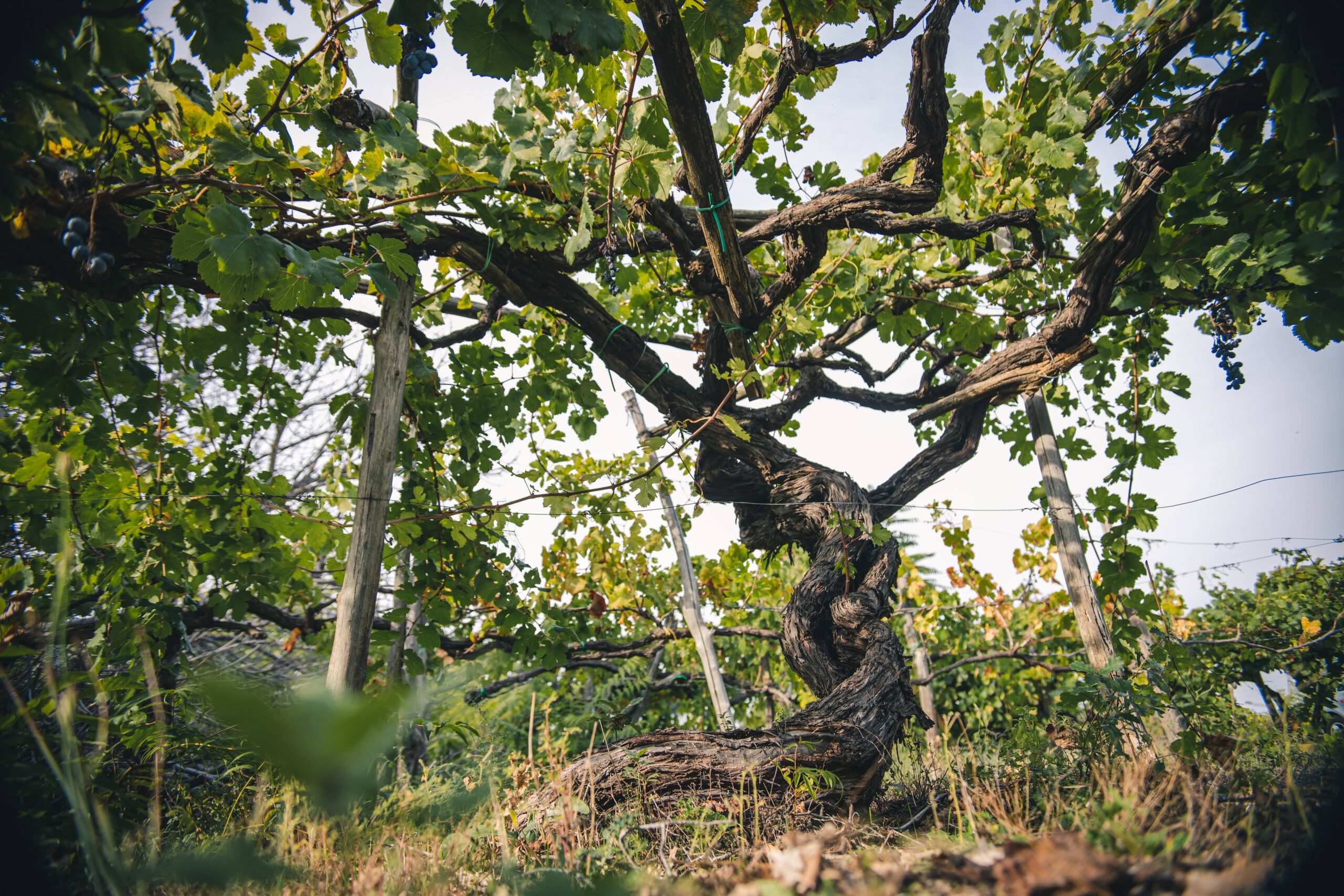A real house-winery that testimony the strong link between Setaro’s family and the Vesuvian wine tradition. The company is located in Trecase, the smallest town on Vesuvio’s foot, where the vineyards stand on a grey ground, made by lavic stone and lapilli, one of the richest and most fertile land on the world. The winery is carved out in the volcanic rock of the last big eruption, a peculiarity that distinguished Massimo and Mariarosa Setaro’s company, active since 2005. “Setaro is a company that was born from my parent’s passion and work”, says Massimo Setaro “Although my frequent travels took me away from that rural world, whenever I came back, the passion for the country was boiling in my veins. As a result, when the time came, I took my father’s place”. Massimo explains very simply the way in which he started working in his family business: “I’m not just a wine entrepreneur. I simply took my parents’ vineyards and tried to give them an oenological dimension, as my father produced just bulk wine. The company today is composed by fourteen hectares, and produces more or less eighty-five thousand bottles every year”.
The vineyards are all around the Vesuvio National Park, and they are divided in two different zones: the first one, called the High Tower, is the higher. Here the production system used is the guyot, and the ground, made by sand and lapilli, allowed the cultivation of vines ungrafted. The plants are not eroded by Phylloxera, that cannot survive in a ground so melted and sandy.
The other vineyard is located in Bosco del Monaco, downstream, where there still are some old vineyards based on the traditional “pergola vesuviana” method. “All our vineyards are previous from Phylloxera, as many of them are more than 200 years old. They take place on volcanic grounds, where we use ancient cultivation techniques.
One example is “O’ Calaturo”, that in current Italian is called “Method of propagation”: it consists in taking one branch of the plant and burying it on the ground for 70 cm. Then, you have to cut a sort of ring around the bark, to create a scarf from which new roots will born. After some time, it will become possible to separate the new branch from the original plant, as it will have developed its own new roots. It’s an ancient technique, which needs lot of time to give results”.
Casa Setaro has been the first wine company on the world to produce a Traditional Method from Caprettone grapes: “We use just indigenous grapes, and Caprettone in particular is an historical grape, mistaken for the “fox tail” for years, and recently rediscovered by some Vesuvian farmers. The grape probably owes its name to the shape of its clusters, which seems the beard of a goat. Someone says that the world indicates the vineyards that look toward Capri”. Massimo has the merit to have brought back in vogue this type of grapes, that produces fresh, savory white wines, with citrus and flowers scents.
Casa Setaro has always preferred organic ways of production: it produces ten different layers, characterized by aromatic complexity and good acidic backbone. From these types of grapes they produce still vines, vines matured in amphorae and sparkling wines.
www.casasetaro.it







